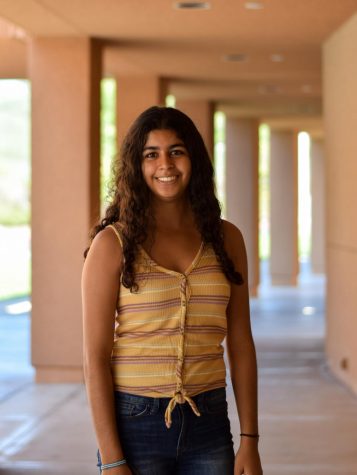A bright blooming reopening
April 23, 2021
The Huntington Botanical Gardens exhibit a medley of displays of the serenity of nature to satisfy any vibe. But beautiful gardens are not all The Huntington has to offer: Select galleries, including one showing a newly restored 18th century masterpiece, The Blue Boy by Thomas Gainsborough, reopened April 17th.
In compliance with COVID-19 guidelines, The Huntington implemented requirements for all visitors to wear masks and maintain a physical distance of at least six feet. Like many other public spaces, visitors are expected to stay home if they exhibit symptoms of COVID-19 or have come in contact with other individuals who have shown symptoms. Two of the 14 gardens remain closed for being high-touch spaces. A few more art galleries have also reopened, as well as the 1919 Café and the Huntington Store, where people can pick up orders they placed online. All visitors are required to purchase their tickets in advance on The Huntington’s website.
A total of 16 themed botanical gardens taking up a total of 130 acres are offered for the community to tour. They contain 27,000 different types of plants that make up 16,000 species, sure to delight any plant connoisseur. Many collections of flowers in addition to these gardens are also on display throughout The Huntington, where visitors can learn about the botany through presentations led by professionals. The gardens hold collections of orchids, camellias, cycads and bonsai. Viewers can also check the blooming calendar on The Huntington’s website to discover what flowers are in season ahead of their visit.
The botanical gardens feature plant species from all around the world, including one garden dedicated specifically to the plant taxa of California, which mainly highlights the drought-tolerant plants that can be seen all throughout the state, from snowy mountains to areas with a Mediterranean climate. Visitors are welcomed by a diverse canopy of California trees, including California pepper trees, podocarpus trees and fruitless Wilsonii olive trees. Contrasting the dull green hue of the foliage, flower species like the red yucca, Canary Island lavender and Otto Quast Spanish lavender come in red, blue and lavender.
Considered one of the world’s greatest independent research libraries, The Huntington galleries feature American and European art, as well as exhibitions of historical documents, including displays of William Shakespeare’s first 36 plays, Isaac Newton’s 1687 “Principia” formulating his laws of motion, Henry David Thoreau’s “Walden” and more. Only select galleries are currently open.
Interested visitors can book tickets and plan their visit in depth at https://www.huntington.org/plan-your-visit.



![AAAAAND ANOTHER THING: [CENSORED] [REDACTED] [BABY SCREAMING] [SIRENS] [SILENCE].](https://thehowleronline.org/wp-content/uploads/2025/06/lucy-1200x800.jpg)




















































